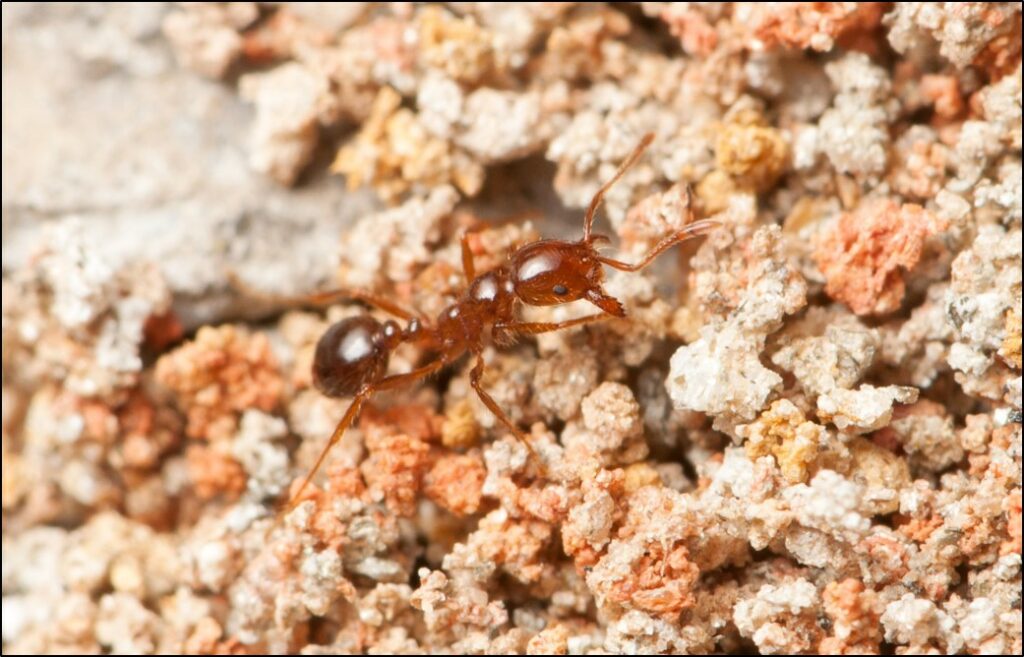Dealing With Pesky Fire Ants
go.ncsu.edu/readext?620416
en Español / em Português
El inglés es el idioma de control de esta página. En la medida en que haya algún conflicto entre la traducción al inglés y la traducción, el inglés prevalece.
Al hacer clic en el enlace de traducción se activa un servicio de traducción gratuito para convertir la página al español. Al igual que con cualquier traducción por Internet, la conversión no es sensible al contexto y puede que no traduzca el texto en su significado original. NC State Extension no garantiza la exactitud del texto traducido. Por favor, tenga en cuenta que algunas aplicaciones y/o servicios pueden no funcionar como se espera cuando se traducen.
Português
Inglês é o idioma de controle desta página. Na medida que haja algum conflito entre o texto original em Inglês e a tradução, o Inglês prevalece.
Ao clicar no link de tradução, um serviço gratuito de tradução será ativado para converter a página para o Português. Como em qualquer tradução pela internet, a conversão não é sensivel ao contexto e pode não ocorrer a tradução para o significado orginal. O serviço de Extensão da Carolina do Norte (NC State Extension) não garante a exatidão do texto traduzido. Por favor, observe que algumas funções ou serviços podem não funcionar como esperado após a tradução.
English
English is the controlling language of this page. To the extent there is any conflict between the English text and the translation, English controls.
Clicking on the translation link activates a free translation service to convert the page to Spanish. As with any Internet translation, the conversion is not context-sensitive and may not translate the text to its original meaning. NC State Extension does not guarantee the accuracy of the translated text. Please note that some applications and/or services may not function as expected when translated.
Collapse ▲It has been nice to finally have rain over the past few weeks. We usually see fire ant mounds being more prominent this time of year especially after heavy rains. Fire ants are indeed a pesky insect that everyone deals with at one time or another.
Red imported fire ants are a pest in home lawns and landscapes known for their painful stings and unsightly mounds. Fire ants can occur anytime of the year, but tend to peak in the spring and fall especially in moist soils. The big question everyone asks is how we control the red imported fire ants. Fire ants cannot be completely eradicated but with proper control measures they can be reduced or eliminated temporarily from small areas. You don’t have to look far in garden centers and stores before finding products for controlling fire ants. No matter what product you select it is important to read and follow the label directions because improper application of the insecticide can result in the product not being as effective in controlling fire ants.

Red imported fire ants are a pest in lawns and gardens known for their painful stings and unsightly mounds.
A “two-step” approach is recommended to managing fire ants. The first step is to broadcast fire ant bait over an area where fire ant mounds are occurring while the ants are foraging. The idea with fire ant baits is that worker ants will bring the bait back to the mound, thinking it is food. The worker ants feed the bait to the queen before its effects are discovered. It is important to understand that fire ant baits take time to work. Avoid disturbing the mounds and give 2 to 4 weeks for baits to have an effect. The second step to this “two-step” approach is to treat individual mounds that still exist a couple of weeks after applying the bait. Individual mound treatments can include baits, granules, dust, and drenches.
There are many products to choose from when controlling fire ants in your lawn. Bait treatments can include but are not limited to insecticides like hydramethylnon (Amdro, Maxforce), methoprene (Extinguish), and pyrethroids (Talastar, Tempo). Spinosad (Entrust, Green Light Fire Ant Control) is an organic insecticide option available for controlling fire ants.
It is important to recognize and be on the outlook for fire ant mounds to avoid being stung. Also, remember to teach children what fire ant mounds look like and to not kick or disturb the mound. If you have access to the internet and would like more information on the red imported fire ant, Texas A&M University has an informative website that includes how to identify fire ants, control measures, and what to do if stung.
Recommendations for the use of agricultural chemicals are included in this article as a convenience to the reader. The use of brand names and any mention or listing of commercial products or services in this article does not imply endorsement by North Carolina Cooperative Extension nor discrimination against similar products or services not mentioned. Individuals who use agricultural chemicals are responsible for ensuring that the intended use complies with current regulations and conforms to the product label. Be sure to obtain current information about usage regulations and examine a current product label before applying any chemical.
Jessica Strickland is an Agriculture Extension Agent, specializing in horticulture for North Carolina Cooperative Extension in Wayne County.
Learn More!
- Sign up for Wayne County Extension Gardening email list to receive timely gardening tips.
- Learn more by following us on Facebook and Instagram
- Gardening questions? Ask a Master Gardener Volunteer. The Wayne County Extension Gardener Volunteer Plant Clinic is open on Mondays and Wednesdays from 10 a.m. to 1 p.m. (April through August) to help you with your gardening questions. Contact by phone at 919-731-1433,email at master.gardener@waynegov.com or stopping by the Wayne County Extension Office at The Maxwell Regional Agricultural & Convention Center (3114B Wayne Memorial Drive, Goldsboro).




